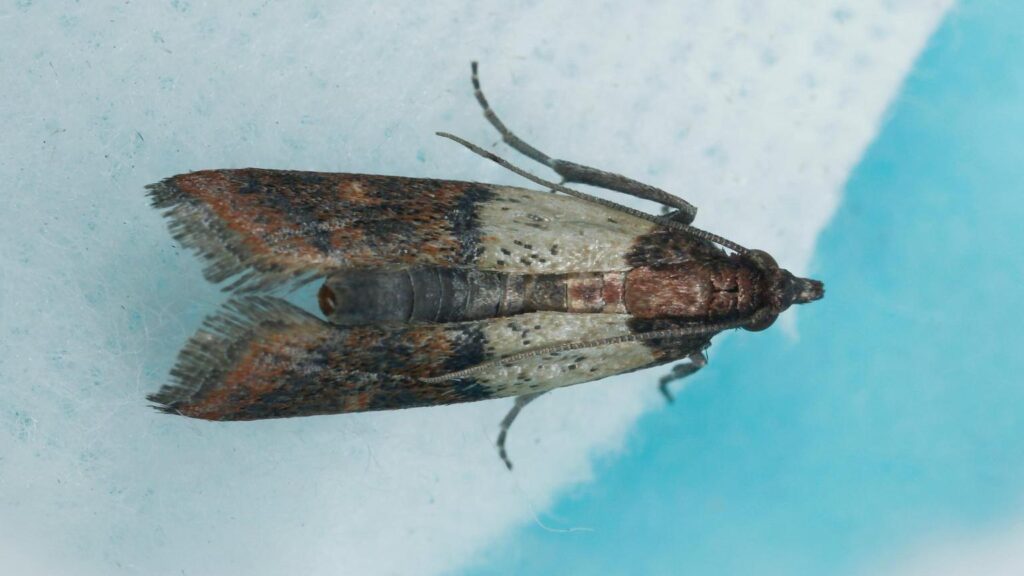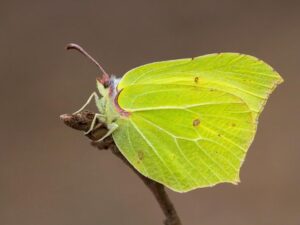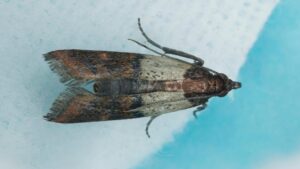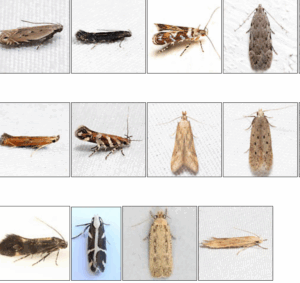Indian Meal Moth: Biology, Infestation, and Control
Introduction
The Indian meal moth (Plodia interpunctella) is a pervasive pest, frequently encountered in domestic kitchens and commercial food storage facilities. Renowned for its adaptability, this species poses significant challenges to food preservation due to its broad dietary preferences and rapid reproductive cycle.(Wikipedia)
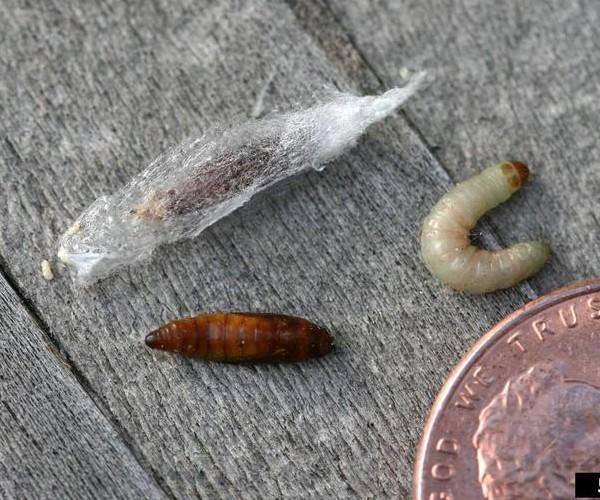
Morphology and Identification
Adult Indian meal moths measure approximately 8–10 mm in length, with a wingspan ranging from 16 to 20 mm. Their forewings exhibit a distinctive bicolored pattern: the basal third is pale gray, while the distal two-thirds display a reddish-brown hue with a coppery sheen. The hindwings are uniformly gray. Larvae are off-white with a brown head capsule, reaching up to 12 mm in length at maturity.
Life Cycle and Reproduction
The life cycle encompasses four stages: egg, larva, pupa, and adult. Females lay between 100 to 400 eggs directly onto food sources. Upon hatching, larvae feed voraciously, contaminating products with silk webbing and frass. After completing development, larvae pupate within silken cocoons, emerging as adults to perpetuate the cycle. Under optimal conditions, multiple generations may occur annually.
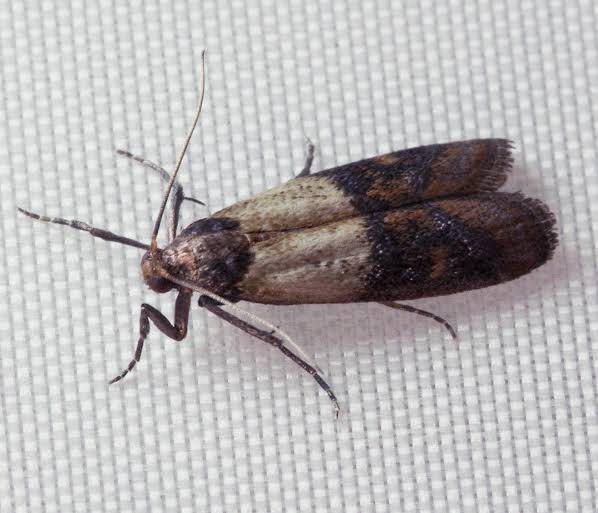
Habitat and Feeding Behavior
Indian meal moths infest a wide array of stored products, including grains, cereals, nuts, dried fruits, spices, and pet foods. Infestations often originate from contaminated goods and can spread rapidly within storage areas. Larvae are capable of penetrating packaging materials such as cardboard and thin plastic, facilitating dissemination.(Get Lost Pest Control)
Indicators of Infestation
Common signs include the presence of adult moths near food storage areas, larval webbing within products, and visible frass. Infested items may emit an unpleasant odor and exhibit clumped or discolored contents.
Management and Prevention Strategies
- Inspection and Sanitation: Regularly examine stored products for signs of infestation. Dispose of contaminated items promptly. Clean storage areas thoroughly, paying attention to crevices and corners where debris may accumulate.
- Storage Practices: Utilize airtight containers made of glass or heavy-duty plastic to store susceptible items. Avoid relying on original packaging, which may be inadequate to prevent infestation.
- Environmental Controls: Maintain storage areas in cool, dry conditions to inhibit pest development. Freezing susceptible products for several days can eliminate eggs and larvae.
- Monitoring Tools: Deploy pheromone traps to detect and monitor adult moth activity. These traps aid in assessing infestation levels and the effectiveness of control measures.
Implementing these integrated pest management strategies can effectively mitigate Indian meal moth infestations, safeguarding food quality and reducing economic losses.
What attracts Indian meal moths
In Canada and around the world, people find Indian meal moths lurking in stored food. Stores, warehouses, and granaries may house the pests, or they can find their way into homes inside processed foods or by flying in from the outdoors. These moths will infest dry snacks, seeds, grains, or starches.
The dry items that these moths infest double as food sources. Common stored food products, that Indian meal moths infest, include grains, chocolate, dried fruit and beans, herbs, seeds, and spices.
Indian meal moths Habitat, Diet, Lifecycle
Indian meal moths and other similar meal moth species earn the name pantry moths because of their egg-laying habits and larvae that feed on pantry foods. While most people notice them in their adult form, it is actually the larval stage that causes the most problems.
Habitat
In Canada and around the world, people find Indian meal moths lurking in stored food. Stores, warehouses, and granaries may house the pests, or they can find their way into homes inside processed goods or by flying in from the outdoors. These moths will infest dry snacks, seeds, grains, or starches.
Diet
The dry items that these moths infest double as food sources. Common stored goods that Indian meal moths eat include grains, chocolate, dried fruit and beans, herbs, seeds, and spices. In addition, Indian meal moths consume starches like adhesives pastes used for furniture or wood.
Life Cycle/Reproduction
After mating, female Indian meal moths lay hundreds of sticky eggs directly onto a food source. Once hatched, larvae form vast webs of silk. At the pupal stage, they create silken cocoons, pupate and then finally emerge as adults.
How worried should I be about Indian meal moths
Larvae attack and feed on the product that they infest, making it inedible. The silk webbing they create gathers frass and shed skins, causing more contamination. The Indian meal moth can have 5-6 generations in a year, making quick detection key.
Seeing adult Indian meal moths can indicate that there is an infestation nearby, and requires regular inspections of any stored foods. Silky cocoons or webs in product are the strongest indication of their presence, though these visual signs may not always appear. Seeing late stage (mature) larvae wandering around on surfaces, often near infested product is also a clear indication of an infestation.
How can I prevent Indian meal moths invading
To help prevent an Indian meal moth infestation, always inspect any store-bought foods or cooking products. Sanitation is critical when dealing with Indian meal moths. Regularly clean out cupboards and containers using soap and hot water. Homeowners can also store items in containers with airtight locks, avoiding any holes, openings, or loose flaps.

